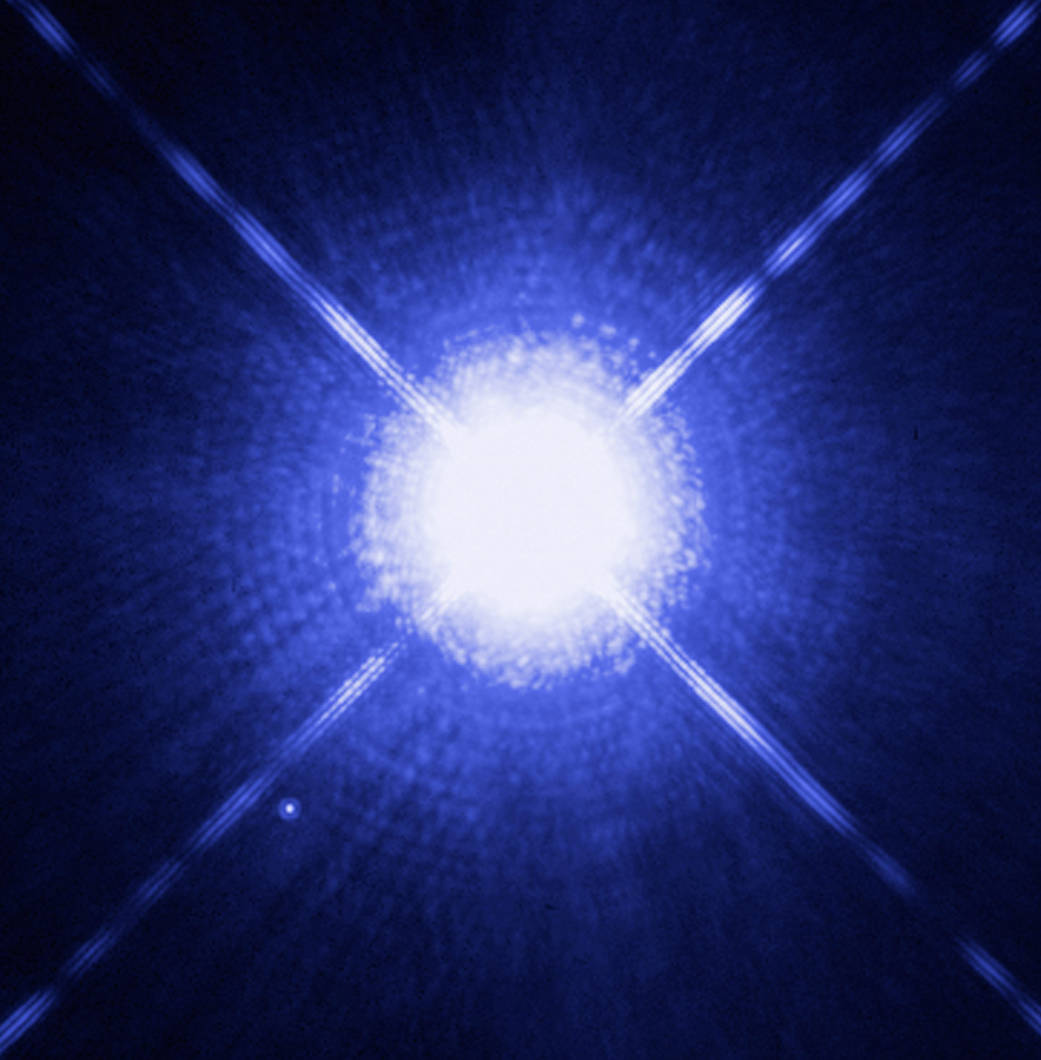
For astronomers, it’s always been a source of frustration that the nearest white dwarf star is buried in the glow of the brightest star in the nighttime sky. This burned-out stellar remnant is a faint companion to the brilliant blue-white Dog Star, Sirius, located in the winter constellation Canis Major. Now, an international team of astronomers, using NASA’s Hubble Space Telescope to isolate the light from the white dwarf, called Sirius B, has been able to measure precisely the white dwarf’s mass based on how its intense gravitational field alters the wavelengths of light emitted by the star.
Sirius B is smaller than the Earth, but much denser with a gravitational field 350,000 times greater than Earth’s, meaning that a 150-pound person would weigh 50 million pounds standing on its surface. Light from the surface of the white dwarf has to climb out of this gravitational field and is stretched to longer, redder wavelengths of light in the process. This effect, predicted by Einstein’s theory of General Relativity in 1916, is called gravitational redshift. Based on the Hubble measurements of the redshift, Sirius B has a mass that is 98 percent that of our own Sun. Sirius itself has a mass two times that of the Sun and a diameter of 1.5 million miles (2.4 million kilometers).
At 8.6 light-years away, Sirius is one of the nearest known stars to Earth. Stargazers have watched Sirius since antiquity. Its diminutive companion, however, was not discovered until 1862.Image Credit: NASA, ESA, H. Bond (STScI) and M. Barstow (University of Leicester)


























